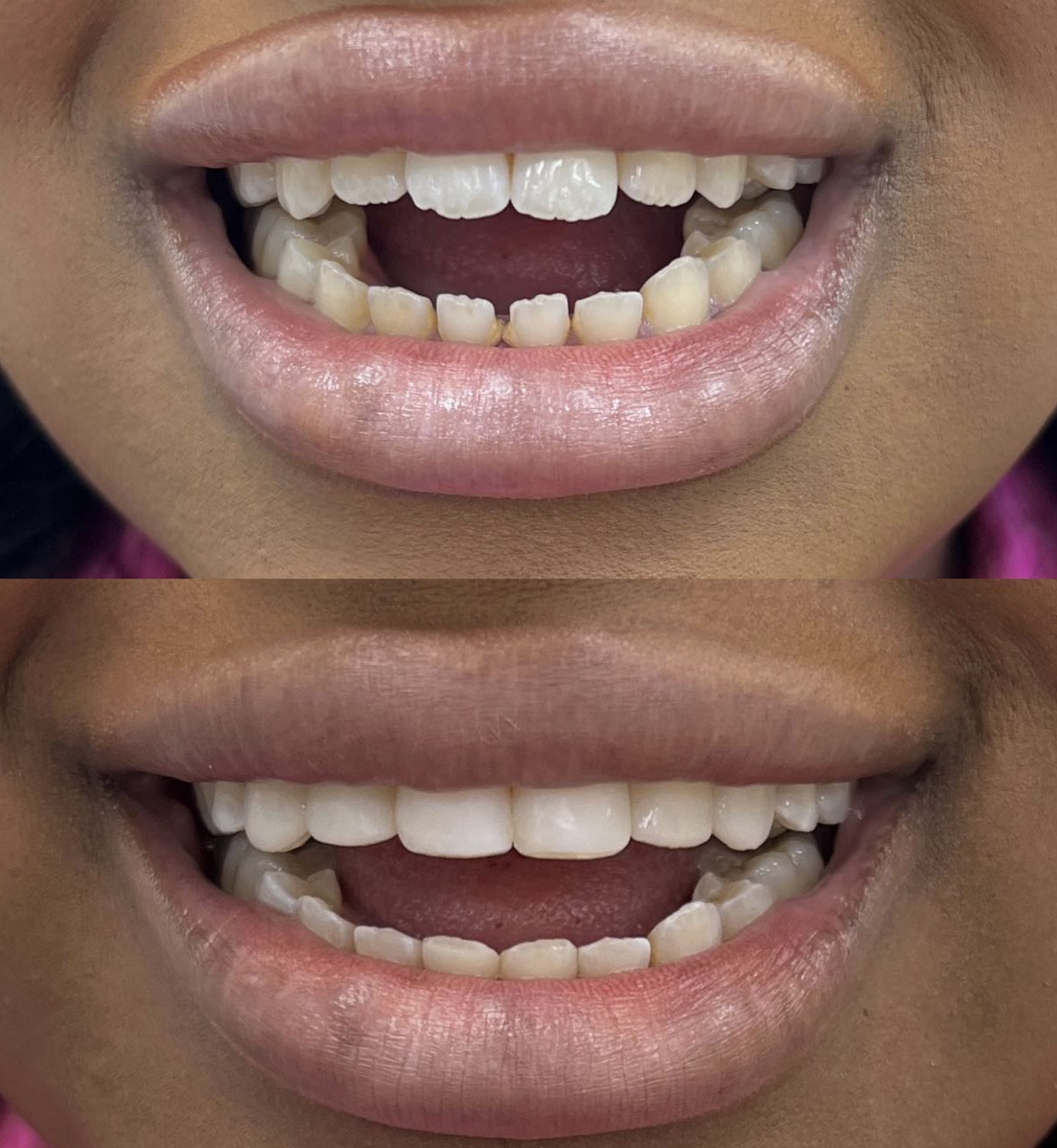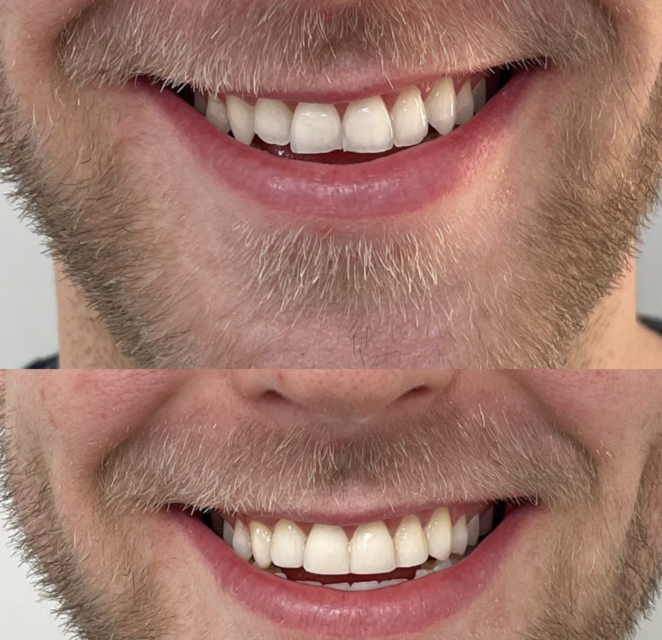Treatments
Implant
A Permanent Solution
Restore Your Smile with Dental Implants
Thousdands of people in the UK had dental implants. This number is projected to grow by about a quarter per year.
More people are turning toward implants versus the traditional dentures, crowns, and bridges.
Are you getting ready for a dental implant? Make sure you take a look at this guide to learn about the dental implant surgery steps and what you can expect.Why not book a consultation today and find out how you could get smiling again with Icedent.
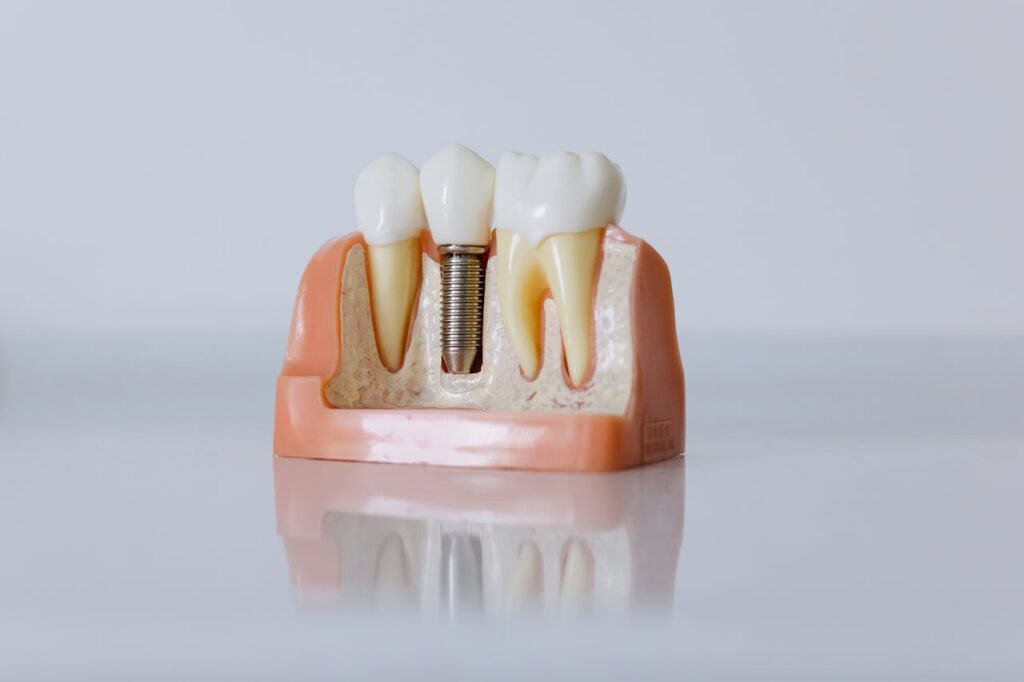
Implant
Overview
When you get dental implants, you are replacing the tooth roots with tooth posts made of metal. These dental posts are like screws for artificial teeth. Implants are a little different than some bridges or crowns because they function and look like real teeth.
How your dentist performs the dental procedure depends on the implant you need, if you have any allergic reaction, and the condition of the jawbone. You may have to have several dental procedures so that your bone can heal properly around the implant. This healing could take time but will support the new tooth securely.

Step - 01
Initial Evaluation
Your dentist or oral surgeon will first do a comprehensive examination to determine the best to determine the condition of your jawbone and the best dental implant procedure. This initial evaluation includes X-rays, taking impressions, and matching the color of your teeth to make your implant look as natural as possible.
You will determine how many teeth you want to replace with implants, which could take some additional planning with other dental specialists, like periodontists, depending on your oral health condition.
You will also discuss all your medical conditions and medications. Depending on your condition or orthopedic implants, you may need to take antibiotics before the surgery to avoid infection.

Step - 02
Tooth Extraction
If you still have a remaining tooth that needs replacing, your dentist will remove it before the dental work is performed. You can have this done at the same time as the implant insertion.
Your dentist will discuss anesthesia options. Most likely, your dentist will use a local anesthetic of novocaine (or lidocaine) to feel numb and take away any pain. It shouldn’t take long to remove the tooth unless it’s fractured.
You will just feel a little tug and pressure while the tooth is extracted. After you get the extraction, you should avoid blowing your nose, smoking, spitting excessively, or drinking through a straw. These actions can create a dry socket and pain.
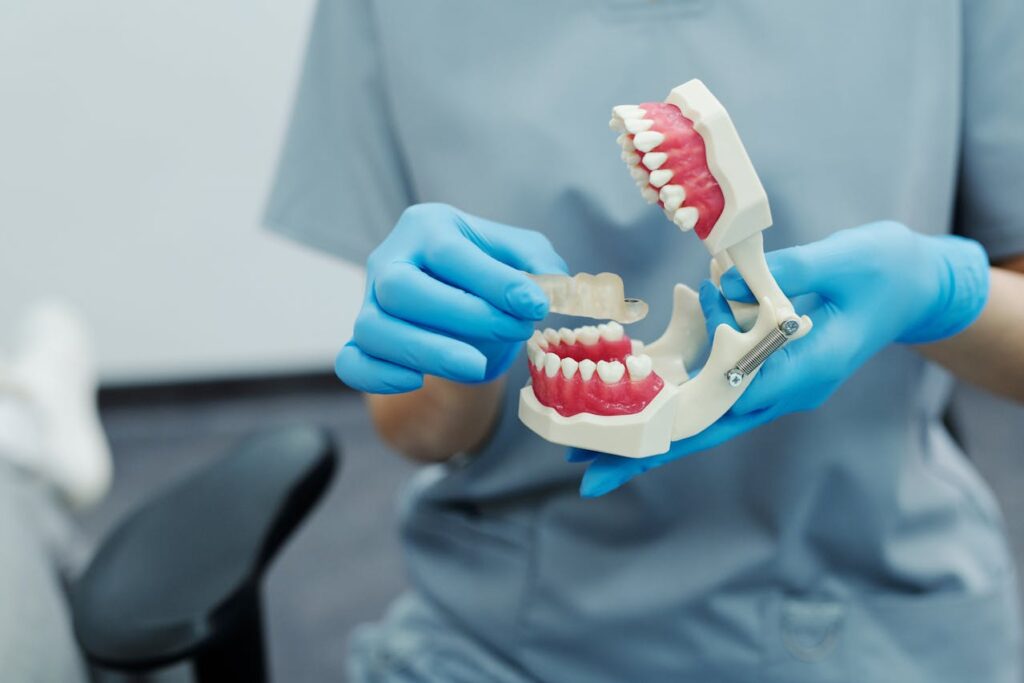
Step - 03
Inserting the Dental Implant and Bone Grafting
There are two types of dental implants : one where the implant is inserted into your jawbone and the other that goes directly under the gumline. Let’s discuss if you have the implant added to your jawbone. If your current jawbone is strong and thick enough, you may not need to get any extra bone added.
Your jaw needs to be strong because there is a lot of pressure when you chew, and you need your bone to be strong to protect that implant. If your jaw needs some extra bone, this bone typically comes from another area of your jawbone away from the implant area.
You may have to let the bone heal first if you have a graft before you can add the implant. Once the bone heals, the dentist or surgeon will add the implant.
After the implant is added to your jawbone, the jawbone will begin to grow around the implant. The implant then becomes part of your natural gum line. This process varies by person and can take anywhere from 3 to 9 months.
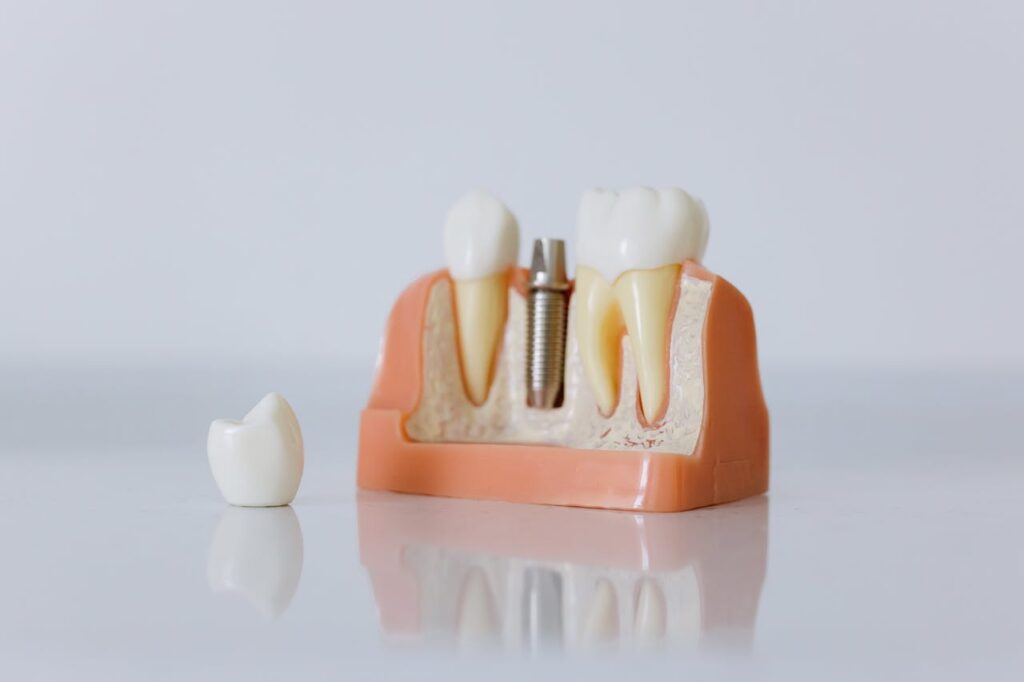
Step - 04
Abutment Placement
Once your implant is stable enough, the dentist will place an abutment on top of the implant. This piece connects the implant to your crown. The abutment needs to be tightened so it stays in place when you eat.
You will not feel anything during this procedure other than a little pressure. You will get local anesthesia to that area.
Sometimes the abutment can be placed at the same time as the implant since it goes past the gum line. It will be visible, so you will need to discuss how to mask this piece since it will show when you smile. The dentist will add a healing cap to keep the tissue and bone from growing overtop of the abutment.

Step - 05
Adding the Permanent Crown
After your gums heal, your dentist will make your artificial tooth or crown. You can choose to have a removable implant or permanent. If you are having multiple teeth in the back just like removable dentures, you may want the removable option so you can clean and replace if needed.
You can’t remove a fixed implant to replace or to clean. It is permanently screwed in the abutment or glued down with cement.

Implant Steps
Other Things You Should Know About Dental Implant Steps
Choosing dental implants is a big decision. They may be expensive, but the success rate is about 95 percent. Here are some other things to keep in mind.
Your jawbone needs to heal during this process, so there are multiple steps. It’s not a procedure you can get own in one visit.
You will not have a tooth until you add your crown. You will need to discuss temporary options like a retainer, dental flippers, or a temporary crown with your dentist.

Implant Steps
After the Surgery
It’s natural to have some discomfort after the surgery. You may notice some bruising on your gums, swelling around your gums and face, some minor bleeding, and some pain at the implant site.
You should stock up on some soft foods after the surgery. You may also want to have some ice packs on hand to help reduce any swelling. Avoid tobacco because it could increase your chance of infections, such as root canal infections, and stain your teeth. We also offer root canal treatment.
It’s important that you keep up good hygiene habits to protect this implant. That means flossing daily and brushing your teeth twice a day. Avoid chewing hard candies that could damage your implants.
Faqs
Your Questions Answered
Find answers to common questions about dental implants and the implant surgery process.
What are dental implants?
Dental implants are artificial tooth roots made of titanium that are surgically placed into the jawbone. They provide a secure base for replacement teeth like crowns, bridges, or dentures.
How long does the implant process take?
The process typically takes a few months to complete, including healing time. Your dentist will discuss a personalized timeline during your consultation.
Are dental implants painful?
Most patients report minimal discomfort during the procedure, thanks to local anesthesia. Post-surgery, any soreness is manageable with pain relievers and usually subsides within a few days.
Who is a good candidate for implants?
Ideal candidates have healthy gums, sufficient jawbone density, and a commitment to maintaining good oral hygiene. A consultation will determine your eligibility.
What are the benefits of dental implants over dentures?
Implants are more stable, durable, and natural-looking. Unlike dentures, they don’t slip, don’t require adhesives, and help preserve the jawbone.
Transparent Pricing
Dental Implant Costs
Invest in a permanent, confident smile with our competitive pricing and flexible payment plans. Explore options that suit your budget and lifestyle.
See the Transformation
Before & After
Browse through our gallery of life-changing dental implant transformations. From single tooth replacements to full-mouth restorations, see how we’ve helped our patients regain their smiles and confidence.
Our Testimonials
Real Stories, Real Smiles
Hear from our satisfied patients and discover how we’ve helped them achieve their dream smiles.
The treatment was done very professionally and Dr. Jesus explained all the options in detail. I’m very happy with the results. All staff were very kind and professional. The clinic is clean and has a new and modern look. Nice and relaxing video on the screen made the time fly and get relaxed during the treatment. I definitely recommend it.
Jacqueline Rodriguez Garcia
Am absolutely in love with my composite bonding, I can’t stop looking at them! Everyone I know has complimented me and asked where they can get their teeth done! Dr Jesus was so lovely and helpful, taking time to ensure I got exactly what I wanted. Highly recommend this amazing practice!!
Tracy Tattum
Great service very clean and modern clinic super friendly stuff always ready to accommodate.Dr Dallel sorted out my dental problems very quickly and efficiently. She also has very professional and caring attitude to her patients.I would highly recommend Dr Dallel she is truly excellent dentist.
Judite Bishop
Book Appointment
Ready for Your Dental Implants?
Now you know the dental implant steps. It’s important you take time to talk to your dentist or surgeon to answer all your questions and understand the procedure. If you are looking for a dentist for dental implants or other dental services, contact Icedent dental and Aesthetics today to schedule an appointment.
Implant
About 3 million people in the U.S. have dental implants. This number is projected to grow by about 500,000 per year. More people are turning toward implants versus the traditional dentures, crowns, and bridges.
Are you getting ready for a dental implant? Make sure you take a look at this guide to learn about the dental implant surgery steps and what you can expect.
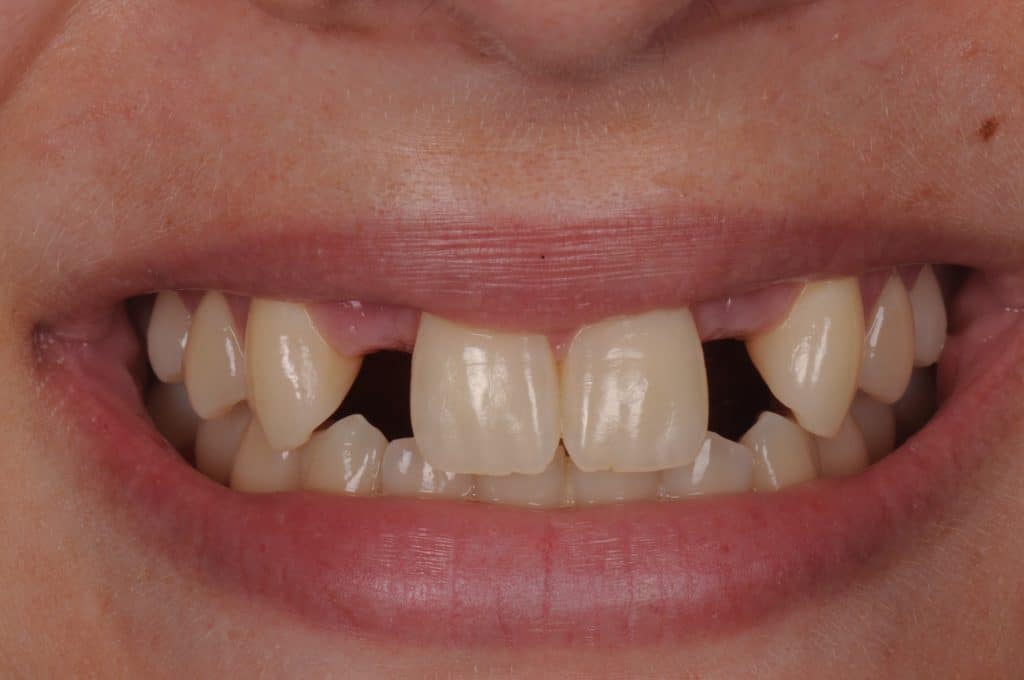
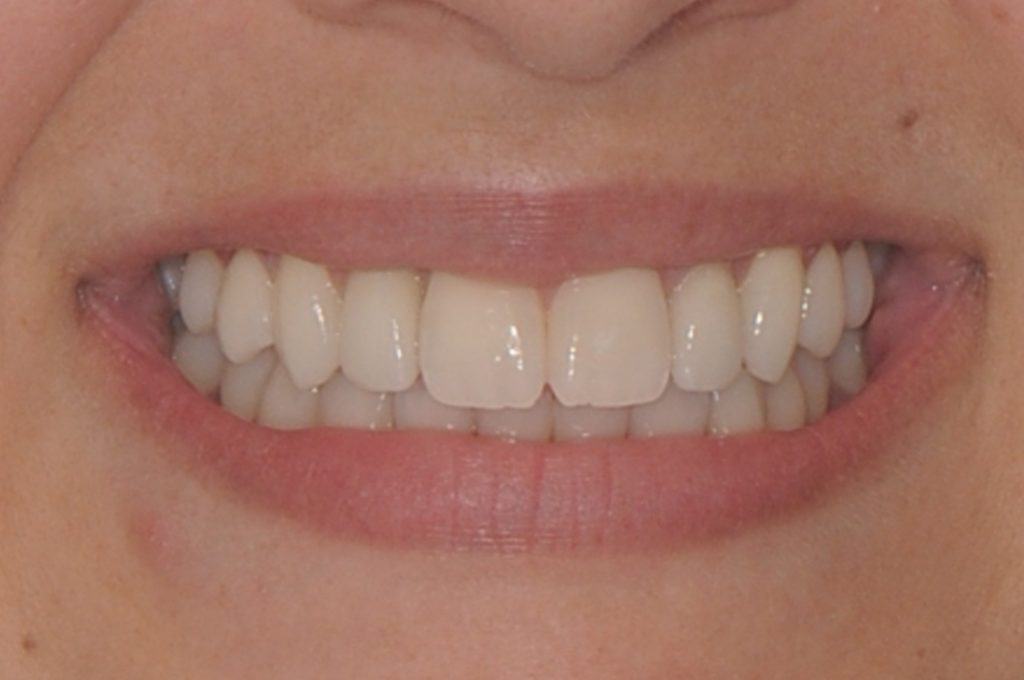
Before-After Result
Appointment!
Expert dental care and transformative treatments for happy, confident smiles every day.
Opening Hours
Monday to Saturday 9:00am – 6:00pm
Navigation
Our Treatments
Contact Information
Follow Us
Copyright © 2025 – Icedent Limited, All Right Reserved.
Find Us
To make an appoinment
Address
74 Walm Lane London
NW2 4RA
Opening Hours
Monday to Saturday
from 9am to 6 pm
Sundays by appointment only
Contact
info@icedent.co.uk
WhatsApp 07450 004 311
Call us on 0203 583 3296
Icedent Limited© 2023 All Rights Reserved







